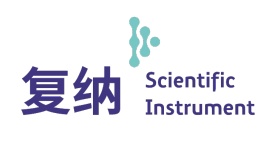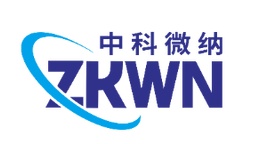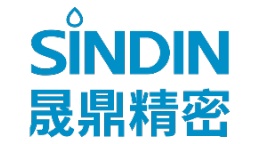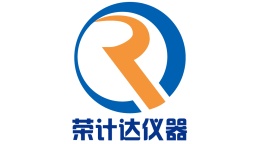方案详情文
智能文字提取功能测试中
Modulated Thermomechanical Analysis -Measuring Expansion andContraction Simultaneously Roger L. Blaine, Ph.D. TA Instruments, 109 Lukens Drive, New Castle DE 19720, USA ABSTRACT In modulated thermal analysis, a sinusoidally varying temperature program isadded to an underlying linearly changing or static temperature program.1. Fouriertransformation ofthe oscillatory temperature “forcing function”and the result dependentvariable provides the deconvolution of these signals into reversing and nonreversingcomponents. The reversing signal is associated with properties dependent upon thetemperature rate of change while the nonreversing signal defines kinetic events (that is,those associated with both time and temperature). Thus for modulated thermomechanicalanalysis (MTMATM),coefficient of thermal expansion is observed in the reversing signaland stress relaxation, softening and heat shrinking are observed in the nonreversingsignal. The ability of MTMA to measure both expansion and contraction simultaneouslyis demonstrated on samples including thermoset composite printed circuit boards andheat-shrink packaging film. INTRODUCTION Reading introduced modulated temperature thermal analysis in 1993 (1) withwhat has become known as modulated differential scanning calorimetry (ModulatedDSCQ,MDSCQ). This was followed a few years later by Blaine who reported onmodulatedthermogravimetry(MTGATM)(2)aandby Pricewith1imodulatedthermomechanical analysis (MTMATM) (3). All of these approaches are commerciallyavailable from TA Instruments (New Castle,DE). The impact of modulated temperature measurements on thermal analysis canhardly be underestimated. One leading observer has called modulated DSC “the greatestadvance in DSC since its inception”(4). And nearly half of the articles published inthermal analysis journals now feature one of the modulated temperature techniques. In modulated temperature thermal analysis, a sinusoidal temperature “forcingfunction”is added to the traditional linear (or isothermal) underlying heating rate. Thisforcing function induces in the sample a sinusoidal response that may be deconvoluted toyield reversing and nonreversing information. When applied to thermomechanical analysis (TMA), the temperature modulationproduces a sinusoidal change in test specimen length. Figure 1, for example, shows themodulated temperature at the figure bottom and the length change at the top both as their first derivatives. Discrete Fourier transformation is applied in real time to continuouslydetermine the average value and the amplitude value for each signal. Figure 1-Modulated Temperature and Resultant Modulated Length The governing equation for MTMA is given by (3): where L is length, T is temperature,t is time, A is expansivity, and f(x) is “some functionof...". The left hand term of equation 1, known as the total length change rate, is shownon the right to be composed of two parts; a reversing contribution proportional to thetime rate of change of the independent parameter (temperature) and a nonreversingcontribution from the absolute value of that independent parameter. Of course in TMA, the dependent parameter measured is length (not the time rateof change of length) so the governing equation takes on the form of: where Ltotal is the average length from the Fourier deconvoltion, Lreversing is the(length amplitude / temperature amplitude)J dT/dt K. The “average length”,“lengthamplitude” and “temperature amplitude" are the signals derived from the Fouriertransformation process.J dT/dt is the underlying heating rate averaged over a singleperiod while K is a calibration constant close to unity. The nonreversing length isobtained from the difference between the total and reversing contributions. Figure 2-Lissajou Plot to Determine Phase Lag There is always a“lag” between the applications of the forcing function and theresultant response. The use of sinusoidal forcing functions provides for the easymeasurement and interpretation of the magnitude of this lag through the use of aLissajous plot such as the shown in Figure 2. Evaluation of the midpoint and extremavalues of the Lissajous figure yields the phase lag. In MTMA, this lag is rather large Figure 3-Length Change and Modulated Length Change at the Glass Transition compared to other modulated temperature techniques, about 28 s, due to the largethermal mass and low thermal conductivity of the quartz sample stage and measuringprobe. A practical rule-of-thumb is that the period of the applied forcing function shouldbe about ten times the time constant. So for MTMA, a period of about 300 seconds isused.The applied temperature amplitude is selected based upon the value of theexpansivity value A in equation 1, but is typically ±5°C. And as with all modulatedtemperature approaches, at least 5 cycles is required across a transition in order to havereliable Fourier deconvolution. This results in the typical underlying heating rate of2°C/min or less. The value of the calibration coefficient is determined, as is the length changecalibration of the TMA(5), from the use of a reference material with a known CTE value.We used copper for this purpose as it has no nonreversing or kinetic behavior in theregion of interest between 50 and 150 °C. Figure 4- Glass Transition with Enthalpic Recovery RESULTS AND DISCUSSION Figure 3 shows the dimension (i.e., Ltotal) and modulated dimension signals fora cured thermoset sample undergoing a change in coefficient of linear thermal expansion.Where there is no nonreversing phenomenon, the amplitude of the modulated dimensionderivative is proportional to the coefficient of linear thermal expansion. The expansion isproportional to the amplitude of this signal. As the expansion increases so does theoscillatory dimension amplitude signal. A more complicated example is shown in Figure 4where the oscillatorytemperature signal is shown at the bottom (as its derivative) while the modulated lengthsignal is shown at the top. In this case both the amplitude and average value for thelength change during the course of the experiment with a “peak" in the derivative curveappearing near 140 °C. The resultant total, reversing and nonreversing signals for this thermal curve are shown in Figure 5. The total dimension, presented in the middle curveshows the masking effect on the glass transition by the enthalpic recover transitiontypical of aged thermoset material. The enthalpic recovery causes the test specimen toshrink as it gains mobility upon passing through the glass transition. That is, the samplecontracts (due to the enthalpic recovery) and expands (due to the glass transition) at thesame time with the total length change reflecting the sum of these two events. The uppertrace in Figure 5 shows the reversing expansion of the sample as a result of the increasein the coefficient of linear thermal expansion. The bottom nonreversing curve containsthe shrinkage information resulting from the enthalpic recovery. Figure 5 -Separation of the Glass Transition from the Enthalpic Recovery Another example is shown in Figure 6 for a thin polymer film examined intension. As the sample goes through the glass transition, the expansion of the materialincreases. Additionally, the sample softens in the region of the glass transition and thesample begins to stretch under tension. The expansion is separated out into the reversinglength change while the stretching is resolved into the nonreversing dimension change.In this case both the thermodynamic and kinetic components are in the same direction butare different in effect by an order of magnitude. In TMA, the glass transition temperature is identified by the extrapolation of thelinear portions of the expansion curve before and after the transition to their intersection(6). This value taken from the reversing length change curve corresponds to 154 ℃. Insome cases, the softening temperature, either as the extrapolated onset (6) or at a specificmodulus value (7), is used to estimate the glass transition temperature. Figure 7 showsthat the extrapolated onset from the soften curve estimate the glass transition at 149 °C,some 5°C lower that that obtained from the change in linear expansion. Figure 6-Separation of Film Stretching from Expansivity SUMMARY Modulated thermomechanical analysisis1sshowno beauseful tool fordetermining thermodynamic and kinetic, reversing and nonreversing length changes inmaterials when these thermally induced events take place simultaneously. This ability toseparate thermodynamic from kinetic events aids in the interpretation of the thermalcurve, measures expansion and contraction taking place at the same time and provides amore accurate estimation of the glasstransition temperature than the softeningtemperature. MTMA may have applications in other measurements where thermodynamic andkinetic length changes occur simultaneously. Such examples may include the softeningof organic or inorganic glasses, heat set films and fibers, and shape memory alloys. REFERENCES 1. 6“(Modulated Differential Scanning Calorimetry - A New WayForward in Materials Characterization", Trends in Polymer Science, 1993, 1, pp.248-253. 2. R. L. Blaine and B. K. Hahn, “Obtaining Kinetic Parameters by ModulatedThermogravimetry“, Journal of Thermal Analysis, 1998, 54, pp. 695-704. 3. D. M. Price,“Novel Methods of Modulated Temperature Thermal Analysis",Thermochimica Acta, 1998,315,pp.11-18. 4. B. Wunderlich, Y. Jin and A. Bollar,“Mathematical Description of DifferentialScanning CalorimetryBased On Periodic Temperature Modulation”.Thermochimica Acta,1994,238, pp.277-293. 5. E 2113, “Length Change Calibration of Thermomechanical Analyzers”, ASTMInternational, West Conshohocken, PA 6. E 1545,“ Assignment of the Glass Transition Temperature by ThermomechanicalAnalysis”, ASTM International, West Conshohocken, PA. 7. E 2092, “Distortion Temperature in Three-Point Bending by ThermomechanicalAnalysis”, ASTM International, West Conshohocken, PA Figure 7-Comparison of Softening and Glass Transition Temperatures TA Instruments United States, 109 Lukens Drive, New Castle, DE 19720· Phone: 1-302-427-4000·Fax: 1-302-427-4001E-mail: info@tainstruments.com Spain· Phone: 34-93-600-9300·Fax: 34-93-325-9896·E-mail: spain@tainstruments.com United Kingdom· Phone: 44-1-372-360363· Fax: 44-1-372-360135·E-mail: uk@tainstruments.com Belgium/Luxembourg·Phone:32-2-706-0080·Fax: 32-2-706-0081E-mail: belgium@tainstruments.com Netherlands·Phone: 31-76-508-7270·Fax:31-76-508-7280E-mail: netherlands@tainstruments.com Germany· Phone: 49-6023-9647-0·Fax: 49-6023-96477-7·E-mail: germany@tainstruments.com France·Phone: 33-1-304-89460·Fax: 33-1-304-89451·E-mail: france@tainstruments.comItaly· Phone: 39-02-27421-283· Fax: 39-02-2501-827·E-mail: italia@tainstruments.com Sweden/Norway·Phone: 46-8-594-69-200·Fax: 46-8-594-69-209E-mail: sweden@tainstruments.com To contact your local TA Instruments representative visit our website at www.tainst.com TA ABSTRACTIn modulated thermal analysis, a sinusoidally varying temperature program is added to an underlying linearly changing or static temperature program. Fourier transformation of the oscillatory temperature “forcing function” and the result dependent variable provides the deconvolution of these signals into reversing and nonreversing components. The reversing signal is associated with properties dependent upon the temperature rate of change while the nonreversing signal defines kinetic events (that is, those associated with both time and temperature). Thus for modulated thermomechanical analysis (MTMA™), coefficient of thermal expansion is observed in the reversing signal and stress relaxation, softening and heat shrinking are observed in the nonreversing signal. The ability of MTMA to measure both expansion and contraction simultaneously is demonstrated on samples including thermoset composite printed circuit boards and heat-shrink packaging film.
关闭-
1/8
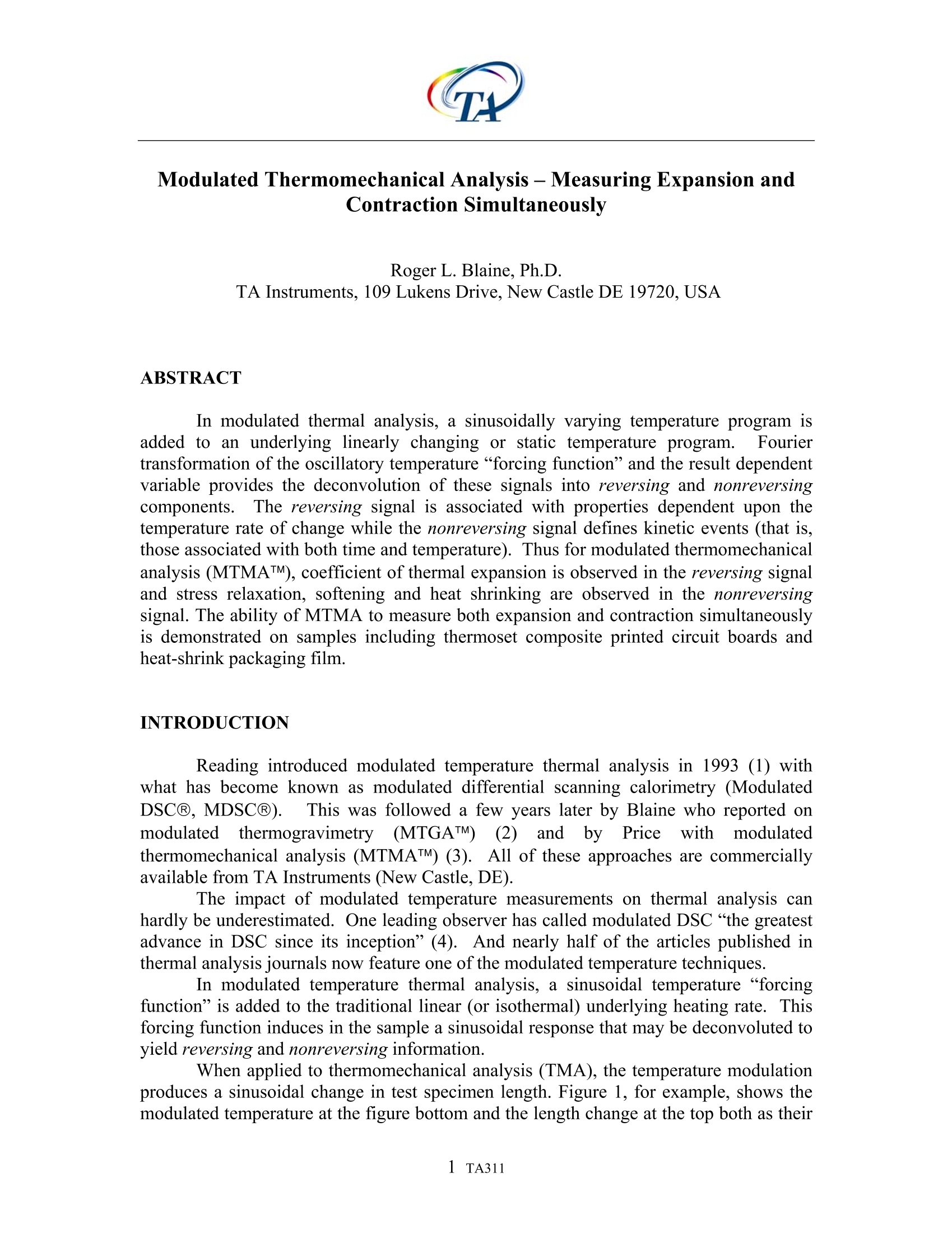
-
2/8
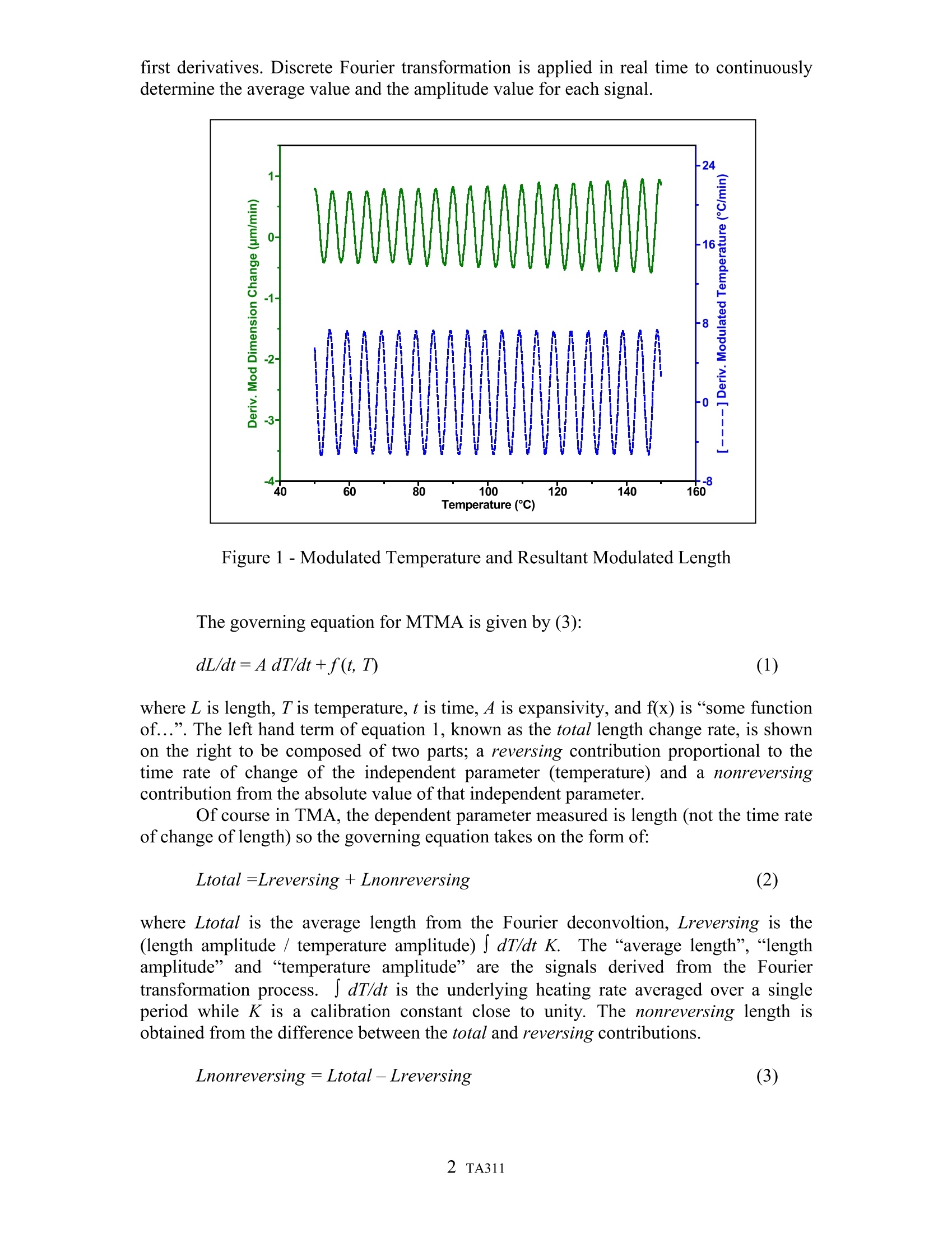
还剩6页未读,是否继续阅读?
继续免费阅读全文产品配置单
TA仪器为您提供《仪器中仪器检测方案(差示扫描量热)》,该方案主要用于其他中仪器检测,参考标准《暂无》,《仪器中仪器检测方案(差示扫描量热)》用到的仪器有TA仪器 Discovery差示扫描量热仪。
我要纠错
推荐专场
差示扫描量热仪(DSC/DTA)
更多相关方案




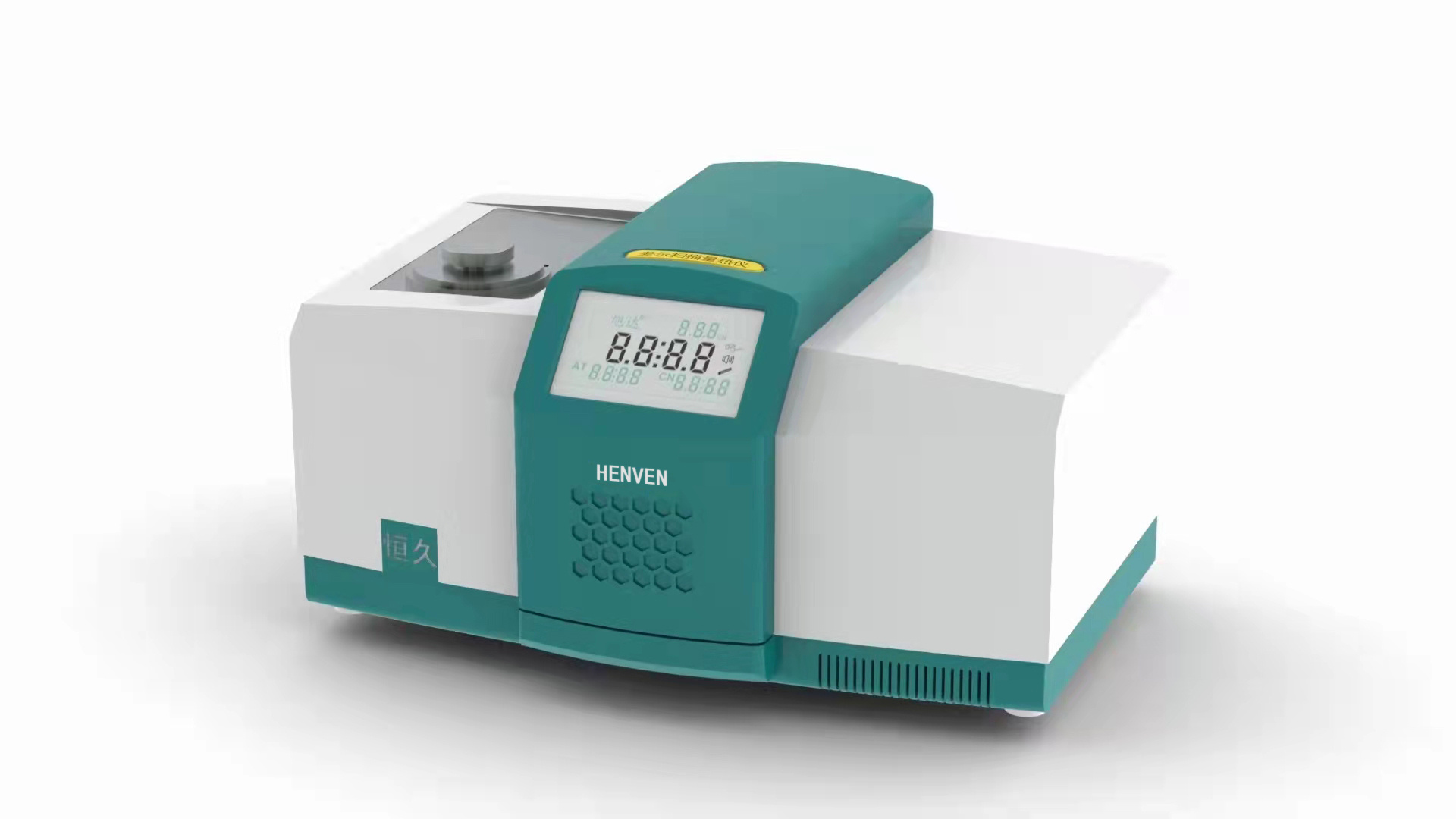
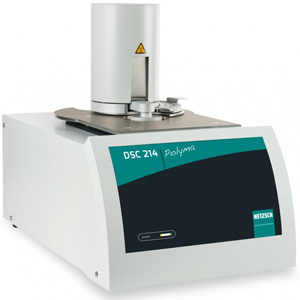
 咨询
咨询
